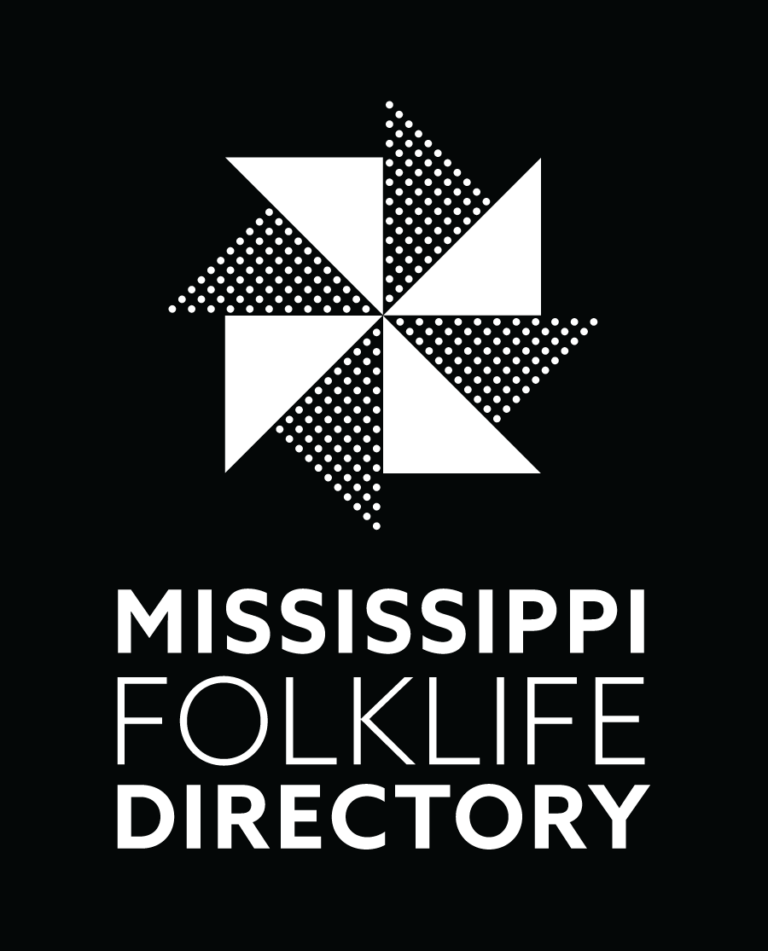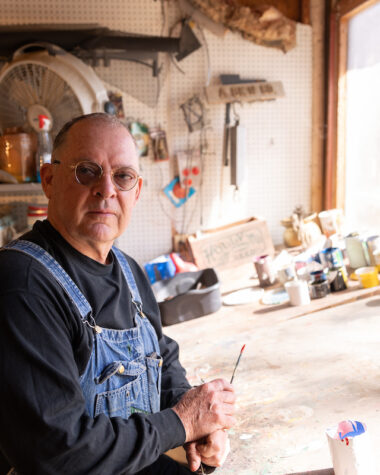Sign painter and muralist Paul Gore received his first set of paintbrushes from his father when he was 14 years old. His father was an artist and a college art professor, who painted signs for extra money. He drove Paul to his first job, hand-lettering the logo on the window of the New York Life Insurance company building in his hometown of Clinton. Before long, Paul had earned enough money painting signs to buy his first car, a Volkswagon van, and could drive himself to new jobs. As a teenager in the 1970s, he was hired to paint letters on the sides of school buses, where he honed his precision and speed through repetition.
Paul’s first career was as a teacher in Clinton public schools, though he continued lettering signs on the side, even painting the lines on the basketball court of the high school where he taught. But by 1987, Paul had turned to sign painting full time with his business, A to B Signs.
In his long career, Paul has seen major shifts in the techniques and technology of sign painting. By 1992, hand lettering was largely replaced by adhesive vinyl sheets, cut precisely by a computer. While Paul still enjoys hand painting best, he is grateful for the speed and affordability that computer-cut vinyl offers. He recalls the job that convinced him to buy a computer system: tediously hand-lettering dozens of identical signs listing regulations in a Coca-Cola plant. It’s a “relief” to let the computer handle monotonous jobs like that, and it allows Paul to spend more time on jobs where he can really have fun: painting freehand cartoon characters on the windows of local daycare centers or fluorescent detailing at classic car shows.
Besides his skills as an artist, Paul is an expert in the technical aspects of sign painting, such as how to mix paint to adhere to different surfaces, from brick to metal to glass. When beginning a new hand-lettering job, Paul first prepares the surface, which determines the paint type and preparation methods. Concrete, brick or metal each require their own application procedure. He then sketches a design and chooses the right kinds of paint and sealants to ensure the design will endure. He often creates unique fonts and mixes custom colors, executing his designs with brushes made of fine natural hairs that will keep their shape, such as sable and camel hair. He even still has among his tools some of his father’s brushes given to him as a teenager. Because every job is different, “there isn’t always an instruction book.” Luckily, Paul finds joy in stretching his creativity and puzzling out the right materials to achieve a client’s desired look.
In 2021, Paul is turning his talents toward a new passion project: a mural at the Natchez Trace Parkway visitor’s center. Paul grew up exploring “the Trace,” hunting for small artifacts in the woods nearby, and is passionate about the enduring importance of the historic trail. He plans to depict the Trace’s long history in the mural, from its earliest days as a bison migratory path to its many years of dedicated use by Native Americans, long before Europeans arrived on the continent. With this mural, Paul wants to continue the tradition of Works Progress Administration muralists from the 1930s, creating a lasting piece of art with a message–“with the objective of educating people” about the history of Natchez Trace that is often overlooked.

